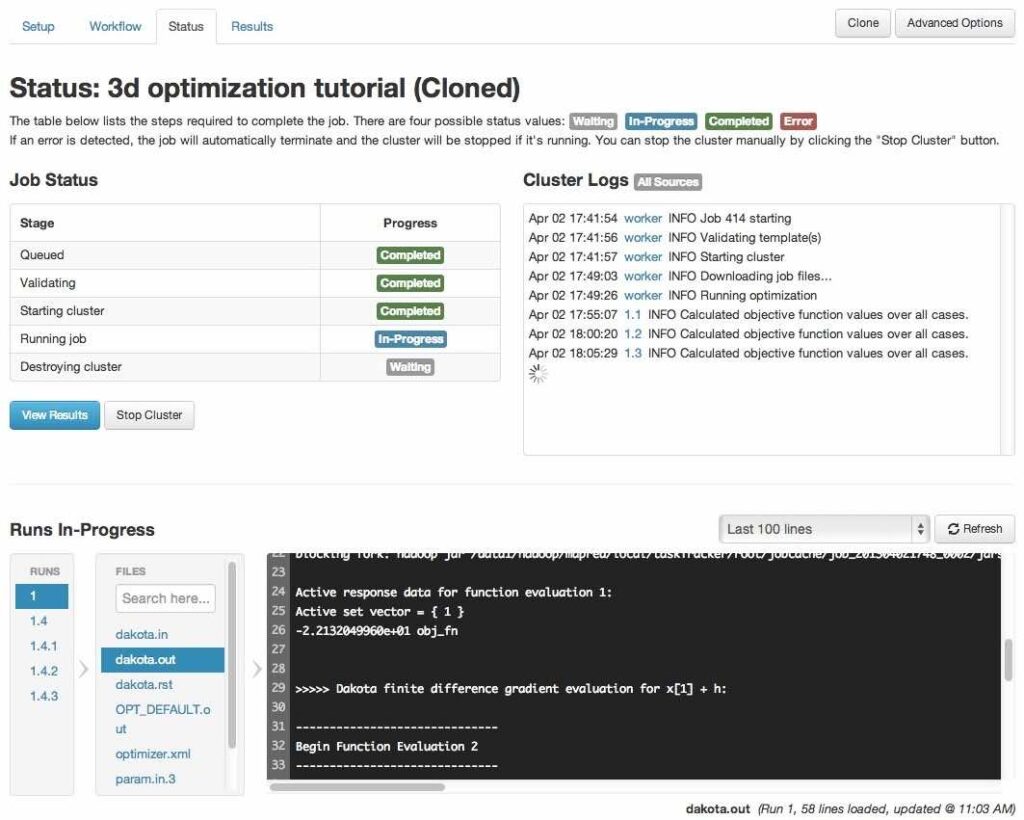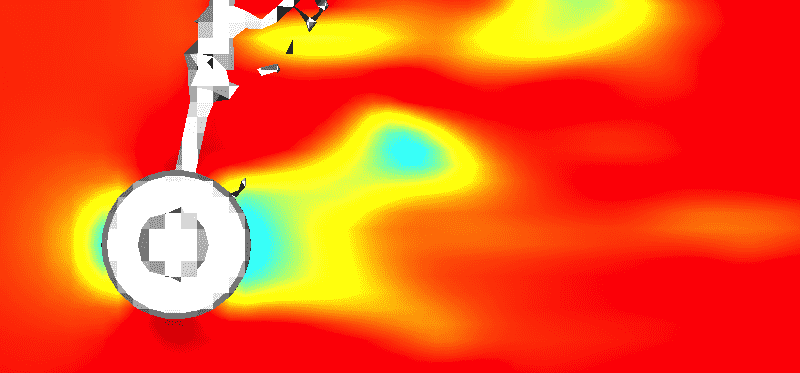Rescale Releases New, Unique ‘Live Tailing’ Feature

What is ‘live tailing’? Why did you build it?
The solvers in modern simulation codes in applications such as CFD, FEA and molecular dynamics are becoming more sophisticated by the day. While taking advantage of (i) new technologies in hardware and (ii) advances in numerical methods, many of these solvers require close monitoring to ensure they converge to a useful and correct solution. It is important to know when a simulation reaches an un-desired state so it can be stopped and the problem can be diagnosed.
At Rescale, we heard consistent feedback from our customers that they wanted to track the status of their jobs real-time. In response, we have recently added a powerful new feature to the platform that enables comprehensive monitoring in an easy and efficient way.
We call this feature ‘live tailing’.
Live tailing allows Rescale customers to monitor any output file for jobs running on the cluster with just one click. This feature replaces the currently painful process of dealing with ssh keys, logging into the cluster, and / or deciphering where the relevant files are located on the server. Rescale’s live tailing is intuitive, user-friendly, highly secure, and much more efficient than traditional monitoring.
How does it work?
Once a customer submits a job, they can go to the Status page, where a list of active runs is displayed. Clicking on one of these runs will display all the files related to that particular job. Customers can scroll through the list or even text-search for a specific file. Clicking on the name of the desired file will display the user-specified number of lines for that particular file.

Why is it useful?
As engineers, we recognize how important it is to track the status of any analysis at any time. Here are some examples of useful applications for live tailing:
- Monitor progress of a simulation, either to extrapolate total expected runtime or to ensure that the simulation doesn’t enter a negative state.
- View output plots to quickly analyze important trends and metrics of the simulation.
- Monitor load balancing for parallelized simulations to diagnose inefficient behavior and to help the customer choose the correct number of processors.
- Monitor time step conditions such as CFL or adaptive grid conditions to ensure that the simulation doesn’t “blow up.” Simulations that creep along and blow up in time or size can now be stopped quickly.
Does live tailing work with image files as well?
Yes. Some simulation codes are able to generate image files such as meshes, graphs or surface plots. These files can be live tailed as well. Clicking on a file that is a jpg, png or gif will display the image right inside the browser. Check out this aircraft landing gear example using Gerris (https://gfs.sourceforge.net/wiki), an open-source CFD code, with data provided by the AIAA.

How can I try it?
Contact us at support@rescale.com – we can share existing jobs with you so you can see how it works.








